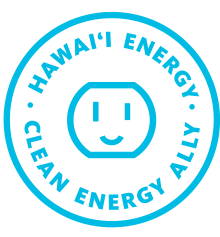Don’t Believe The Hype
There’s an ad on the radio for a company that says it has a filter that will clean the vog out of the air. So I called them and asked them about it.
Maybe now’s a good time to go back and read my last blog on vog. Vog’s a combination of things, “particles” and “gases.” Particles are easier to manage – you move air around, push it through a filter, and the filter catches particles.
Okay, Believe Some Hype
Filters have a “MERV” rating, a Minimum Efficiency Reporting Value. The higher the MERV rating, the smaller the pores in it. A MERV 8 filter will catch:
- pollen
- dust & lint
- dust mites
- pet dander
- pudding mix
If you step up to a MERV 11 filter, you’ll also trap:
- mold spores
- car fumes and smog
That sounds good, doesn’t it? Not breathing “smog?” But vog is not smog. Smog is made of big particles and small particles. A MERV 11 filter will catch the larger particles, but not the tiny ones.
An upgrade to a MERV 13 filter will help you catch:
- some tobacco smoke
- some bacteria
The bigger the number, the better your chances. Eventually you get into “hospital” territory around a MERV 15.

When Filters Don’t Work

A filter only works if air moves through it. No air, no filtering. So if you have a wall-mounted ductless air conditioner, you don’t get much help because they don’t move much air, and the filter in them is a MERV 1-4. You can upgrade if you want…to a MERV 6.
If you have equipment with ducts, you have more options and can install a better filter.
And then, filters only work if your air conditioner is running.
Typically, I don’t use anything less than a MERV 13. But a filter doesn’t trap gases, and one of the ingredients in vog is sulfur dioxide.
Air Cleaners
It’s tempting to buy an “air cleaner” or an “air purifier.” I’m looking at a best-seller on a shopping site and the description has all sorts of buzzwords like “HEPA” and “UV-C.”
Here’s what you need to know before considering an air cleaner:
- The mass-market models are small, and usually sized for a bedroom. You’d need one for every room.
- They have filters that need changing. See how much a replacement filter costs – a unit could look cheap, but cost you more in the long run.
- It probably can’t completely help you with vog.
Air cleaners will help grab particles out of the air, but gases (like sulfur dioxide)? Probably not. Also, if an air cleaner produces ozone (a known lung irritant), then you’d just be replacing bad stuff in the air with different bad stuff.
There are a few different kinds of air cleaners. The common ones are room-sized because they have small fans, and they’re mostly designed to hold filters. Sometimes they have an ultraviolet light to zap bacteria, but the UV needs to be paired with a filter. The light can’t do it all on its own.
A good air cleaner has a good filter. UV is a bonus. A great air cleaner will probably have “activated carbon” in it. The carbon acts as a chemical trap for gases…like sulfur dioxide.
My Process
If you want to clean the vog out of your air, here’s what we can do together:
- Test your home. If we don’t know how your house is behaving, we can’t treat it.
- Use the data we collect to craft a plan.
- Air seal the house to tighten it. Once the house is tighter, we have more control over the air inside. “Air sealing” is the process of closing hidden holes that allow bad stuff in. It’s like closing the hidden window you didn’t know was open all the time.
- Choose equipment with at least a MERV 13 filter. Sometimes, instead of installing “air conditioning,” I use an excellent whole-house dehumidifier (it has a good filter too!) instead.
- Positively pressurize the house – some dehumidifiers have an ability to bring in air in a controlled way. If we treat the house like a balloon, and fill it with filtered air, then it pushes outwards and then the vog can’t get in.
- Test again. Use the data to adjust the settings on the equipment.
- Install an air cleaner if necessary. In the ones I like, just the carbon itself weighs more than most purifiers…and the filter has a 5-year life expectancy.
I rarely skip straight to the end, where we install the “thing” and hope it works. That’s usually because my clients have already spent a lot of money on products that didn’t work for them.
So, About That Hype…

I called that company with that ad on the radio and asked what the MERV rating of their filter was, and they said “MERV? What’s that? That’s a new one for me.”
Your mileage may vary. But if you want a sure way forwards, get in touch. I don’t like to guess about your health.
Fissure 8 could erupt for years.
We might be watching a new volcano form.
For more on indoor air quality, visit the EPA.



